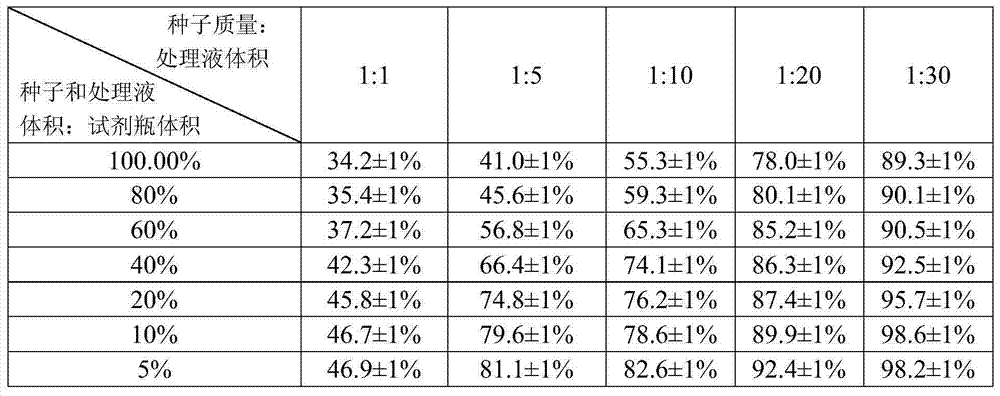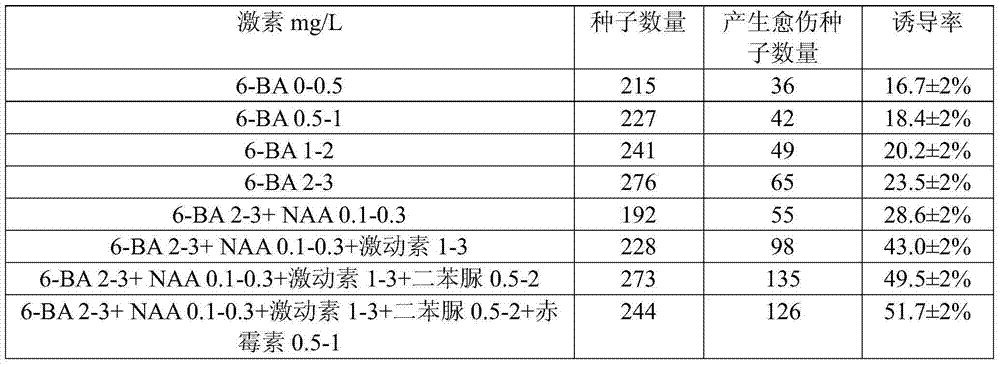A kind of Lycium barbarum aseptic seedling and method for obtaining callus thereof
A callus, sterile seedling technology, applied in horticultural methods, botanical equipment and methods, horticulture, etc., can solve the problems of high lethality, high seed toxicity, low callus induction rate, etc., and achieve sterile rate. Improve and shorten the effect of cycle time
- Summary
- Abstract
- Description
- Claims
- Application Information
AI Technical Summary
Problems solved by technology
Method used
Image
Examples
Embodiment 1
[0026] (1) Fruit drying: Put the collected wolfberry fruit in a nylon mesh bag, hang it in a dry and ventilated room, and place it at 20-25°C for about 14 days, turning it every other day until the fruit is completely dry ;
[0027] (2) Seed disinfection: When the seeds and the peel are easily separated, take out the seeds, place them in a sterile blue-cap screw-top reagent bottle under aseptic conditions, add the treatment solution, and place the blue-cap screw-top reagent bottle on a shaking table , under the condition of 20-25 ℃, shake quickly for 2 minutes, then pour the seeds and the treatment solution on the dry sterile filter paper together, and dry them under aseptic conditions; the treatment solution contains 70% (v / v ) ethanol, 0.1% (v / v) Triton X-100 polyethylene glycol octyl phenyl ether) sterile distilled water, the resistivity of distilled water is ≥0.1×10 6 Ω cm (Europe cm).
[0028] The treatment solution in the step (2) of Example 1 is changed to sterile dis...
PUM
 Login to View More
Login to View More Abstract
Description
Claims
Application Information
 Login to View More
Login to View More - R&D
- Intellectual Property
- Life Sciences
- Materials
- Tech Scout
- Unparalleled Data Quality
- Higher Quality Content
- 60% Fewer Hallucinations
Browse by: Latest US Patents, China's latest patents, Technical Efficacy Thesaurus, Application Domain, Technology Topic, Popular Technical Reports.
© 2025 PatSnap. All rights reserved.Legal|Privacy policy|Modern Slavery Act Transparency Statement|Sitemap|About US| Contact US: help@patsnap.com



